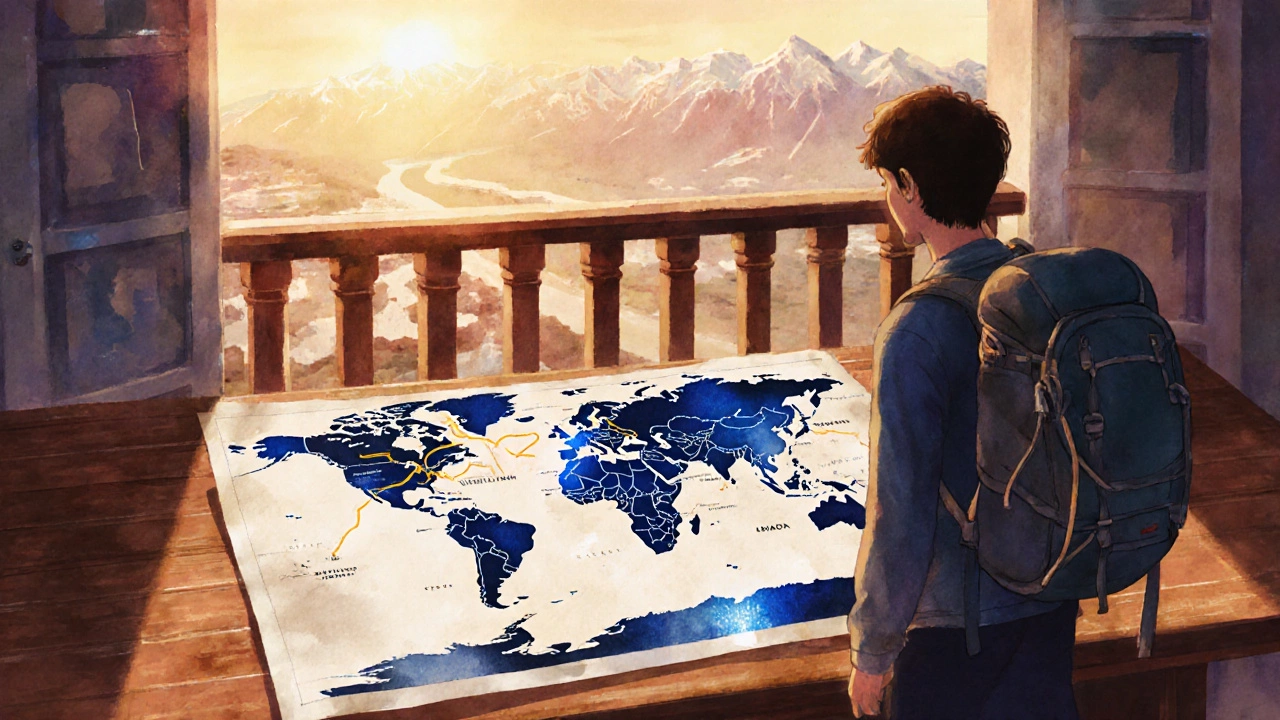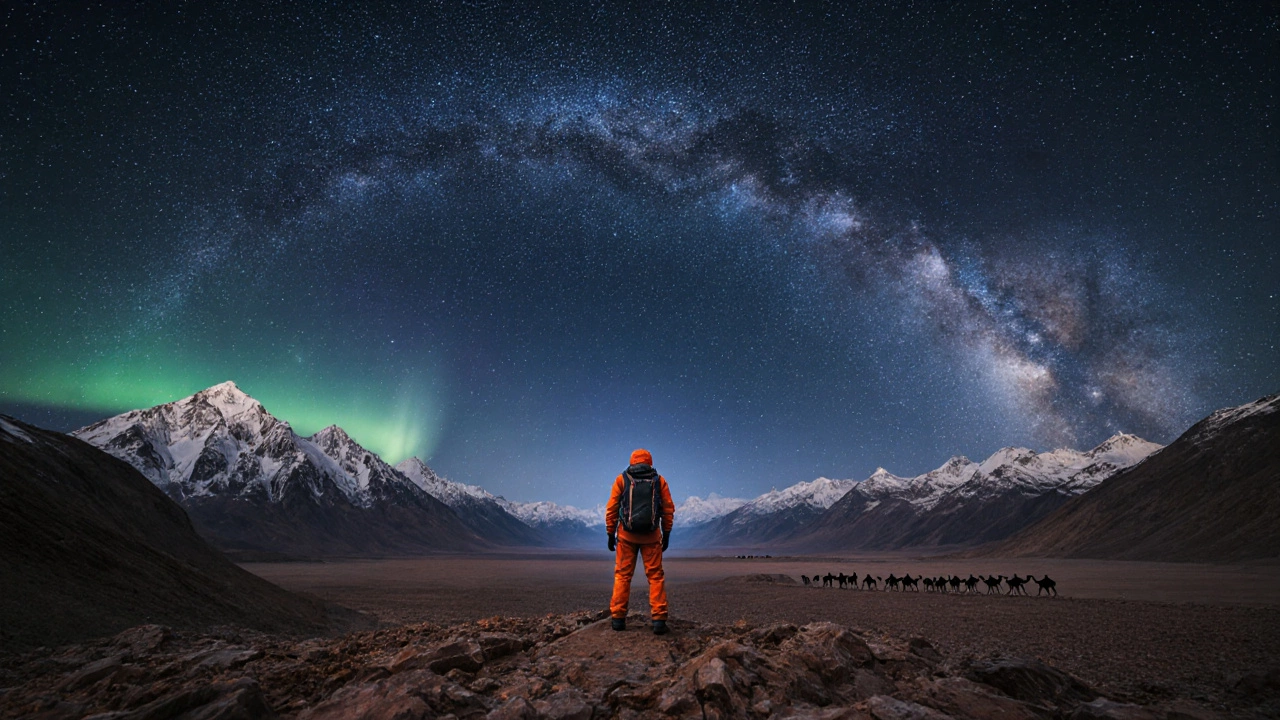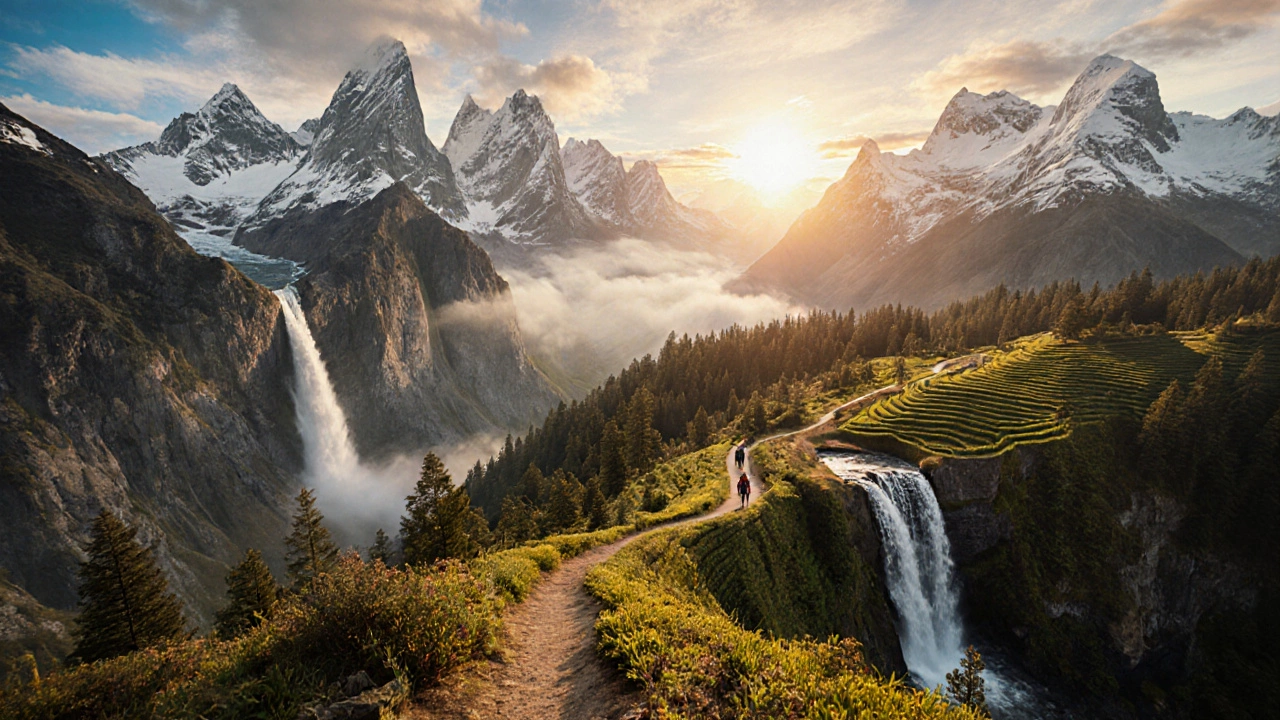Best Hiking Country 2025: Top Destinations Compared

- Oct, 16 2025
- 0 Comments
- Aaron Blackwood
Hiking Country Calculator
Find Your Perfect Hiking Country
Answer these questions to get personalized recommendations based on the article's criteria.
Your Recommendations
Select your preferences above to see your personalized hiking recommendations.
If you’ve ever stared at a world map wondering where the next trail should take you, you’re not alone. Hikers crave scenery that makes the climb worth the sweat, terrain that challenges without overwhelming, and a culture that welcomes tired feet. This guide breaks down the world’s leading hiking countries, weighs the factors that matter most, and shows why India is a hidden powerhouse for trekkers.
How We Pick the Best Hiking Countries
First, let’s be clear about the yardstick. When we rank a hiking destination as a place offering marked trails, diverse landscapes, and reliable infrastructure for walkers, we look at four core criteria:
- Trail Variety - From gentle coastal walks to high‑altitude passes.
- Scenic Impact - How awe‑inspiring the views are, measured by visitor photos and guide‑book ratings.
- Seasonal Window - The length of the prime hiking season without extreme weather.
- Support Infrastructure - Availability of maps, guides, huts, and emergency services.
We also factor in safety records, cost to the traveler, and the ease of getting to major trailheads. The result is a list that works for budget backpackers, luxury trekkers, and everyone in between.
1. New Zealand offers dramatic fjords, volcanic plateaus, and world‑renowned alpine tracks
New Zealand’s South Island is a playground for hikers. The Milford Track and Routeburn Track deliver a blend of rainforest, waterfalls, and glacial vistas in just a few days. Because the country’s trail network is impeccably maintained, you can focus on the scenery rather than navigating confusing signage.
- Best season: Late November to early March.
- Average trail length: 3-7 days per classic route.
- Difficulty: Ranges from easy day hikes to multi‑day alpine treks.
2. Switzerland is famous for its well‑marked Alpine passes and luxury mountain lodges
Swiss trails combine precision engineering with jaw‑dropping scenery. The Via Alpina stitches together 5,000km of paths across eight countries, but the Swiss segment alone boasts iconic peaks like the Matterhorn. Public transport lets you hop between trailheads without a car.
- Best season: June to September.
- Average trail length: 2-10 days for classic routes.
- Difficulty: Predominantly moderate to strenuous.
3. Patagonia spans southern Argentina and Chile, offering remote, wind‑swept mountains
Patagonia is the wild card for adventurous hikers. The W Trek in Torres del Paine delivers towering granite towers, turquoise lakes, and unpredictable weather that tests even seasoned trekkers. The region’s low population means you’ll often be the only person on the trail.
- Best season: December to February.
- Average trail length: 4-8 days for the classic circuit.
- Difficulty: Mostly hard; weather can add extra challenge.
4. United States offers diverse terrain from the Rocky Mountains to the Appalachian Trail
The U.S. packs numerous iconic long‑distance trails. The Appalachian Trail spans 3,500km from Georgia to Maine, while the John Muir Trail threads through the Sierra Nevada’s highest peaks. National parks provide well‑maintained campgrounds and visitor centers.
- Best season: Late spring to early fall (varies by region).
- Average trail length: Varies; day hikes to thousand‑mile thru‑hikes.
- Difficulty: Wide spectrum from easy to ultra‑hard.

5. Nepal is the gateway to the Himalayas, featuring some of the world’s highest trekking routes
Himalayan trekking is synonymous with Nepal. The Everest Base Camp trek offers staggering altitude, while the Annapurna Circuit showcases deep valleys and hot springs. Trail infrastructure includes teahouses that provide meals and basic rooms for a low price.
- Best season: October to early December and March to May.
- Average trail length: 7-21 days.
- Difficulty: Moderate to strenuous, depending on altitude.
6. Canada features vast wilderness, granite coastlines, and rugged park trails
Canada’s national parks, like the West Coast Trail in British Columbia, are famous for coastal scenery and challenging conditions. For high‑altitude lovers, the Gros Morne and Jasper park trails deliver alpine meadows and glacier views.
- Best season: July to September.
- Average trail length: 2-14 days.
- Difficulty: From easy coastal walks to demanding backcountry routes.
7. Iceland offers volcanic landscapes, waterfalls, and the unique experience of hiking under the midnight sun
Iceland’s Laugavegur trail stitches together geothermal fields, black sand deserts, and glacier tongues. Because the island is small, you can combine multiple day hikes into a week‑long adventure without long travel days.
- Best season: Late June to early September.
- Average trail length: 4-7 days for the classic Laugavegur.
- Difficulty: Moderate, though weather can be unpredictable.
8. India offers a surprising mix of high‑altitude Himalaya treks, tropical Western Ghats walks, and desert trails
India may not be the first name that pops up in a global ranking, yet its trekking diversity rivals the best. From the snow‑capped peaks of Ladakh to the misty forests of the Western Ghats, the country delivers a range of experiences for every skill level.
Key Indian trekking spots include:
- Manali‑to‑Spiti Valley: A high‑altitude adventure that skirts desert‑like landscapes and offers night skies that look like a planetarium.
- Rajasthan’s Desert Trails: Camel‑back walks through the Thar Desert give a taste of the Sahara without leaving the subcontinent.
- Western Ghats - Munnar to Periyar: Lush tea plantations, waterfalls, and wildlife sightings make it a cool escape from the heat.
- Sikkim - Goecha La: A Himalayan trek with panoramic views of Kanchenjunga, the world’s third‑highest peak.
- Andaman Islands - Havelock to Neil Island: Coral‑reef side walks blend sea and jungle.
Why India stands out:
- Cost‑effective: A typical trek costs a fraction of what you’d pay in Europe or North America.
- Cultural richness: Villages along the route often welcome hikers with tea, meals, and stories.
- Lengthy season: From October to May you can avoid monsoon and still enjoy comfortable temperatures.

Quick Comparison of the Top Hiking Countries
| Country | Continent | Typical Trail Length | Difficulty Range | Best Season |
|---|---|---|---|---|
| New Zealand | Oceania | 3-7 days | Easy‑Hard | Nov-Mar |
| Switzerland | Europe | 2-10 days | Moderate‑Hard | Jun-Sep |
| Patagonia | South America | 4-8 days | Hard | Dec-Feb |
| United States | North America | Day to 3,500km | Easy‑Ultra‑Hard | Varies |
| Nepal | Asia | 7-21 days | Moderate‑Hard | Oct-Dec, Mar-May |
| Canada | North America | 2-14 days | Easy‑Hard | Jul-Sep |
| Iceland | Europe | 4-7 days | Moderate | Jun-Sep |
| India | Asia | 2-30 days | Easy‑Hard | Oct-May |
Planning Your First International Hike
Once you’ve chosen a country, a few practical steps keep the adventure smooth:
- Research trail permits. Some regions (e.g., Nepal’s Annapurna) require official permits; they’re often obtainable online.
- Pack for changing weather. Even in summer, mountain altitudes can bring snow. A layered system works best.
- Hire local guides where needed. In places like Ladakh or the Western Ghats, guides add safety and cultural insight.
- Check health requirements. High altitude can trigger AMS; a brief acclimatization plan is vital.
- Travel insurance. Pick a policy that covers evacuation from remote trails.
Remember, the best hikes are those that match your fitness, curiosity, and budget. No need to chase the most famous trail if a lesser‑known path offers the same wow factor.
Why the best hiking country isn’t a one‑size‑fits‑all answer
Every hiker has a personal definition of “best.” Some chase snow‑capped peaks, others seek tropical jungles. The list above gives you a menu; you pick the dish that fits your palate. The real magic happens when you step onto the trail, regardless of the flag on the map.
Frequently Asked Questions
Which country offers the most affordable trekking experience?
India tops the affordability chart. Daily costs for food, accommodation, and guides often stay under $30, while still delivering diverse landscapes from the Himalayas to tropical coasts.
Do I need a visa for most of these hiking countries?
Visa policies vary. New Zealand, Switzerland, and the United States typically require an e‑visa or tourist visa, while countries like Nepal offer visa‑on‑arrival for many nationalities. Always check the latest entry requirements before booking.
What is the safest season for hiking in Patagonia?
December through February is the warmest window, with longer daylight hours and more stable weather, making it the safest period for most routes.
Can I hike the Appalachian Trail in a single trip?
Yes, but it’s a massive commitment. Thru‑hikers typically spend 5-7 months covering the full 3,500km. For a shorter taste, try popular sections like the Shenandoah or the Great Smoky Mountains stretch.
What gear is essential for high‑altitude treks in Nepal?
A down jacket, insulated sleeping bag (rated to -10°C), sturdy trekking boots, a UV‑blocking hat, and a portable water‑filter are must‑haves. Layering is key, as temperatures can swing dramatically.